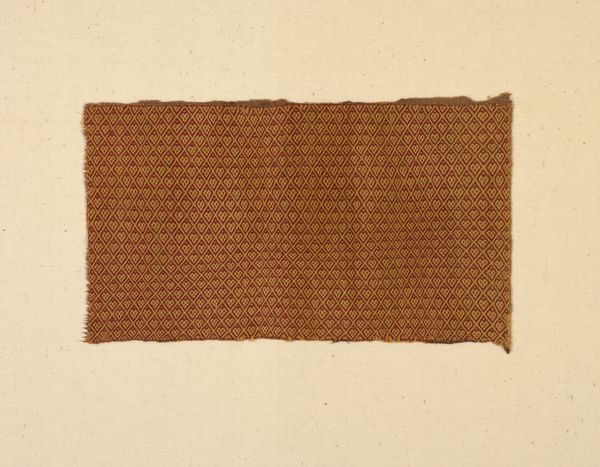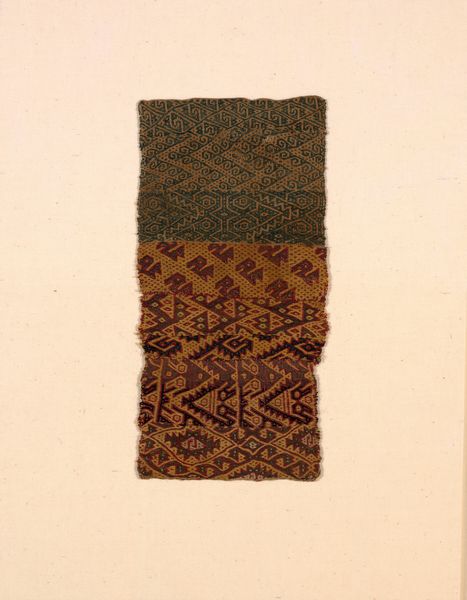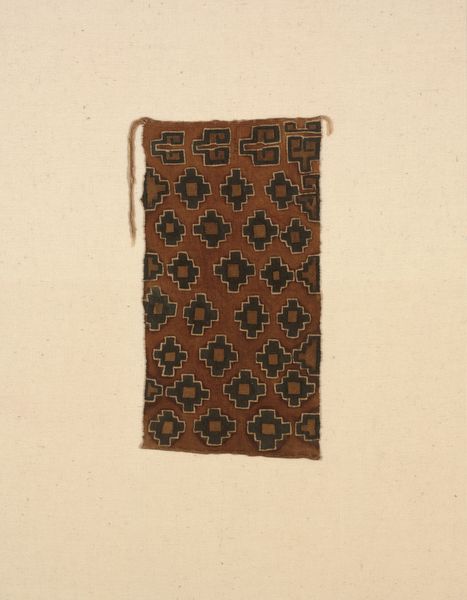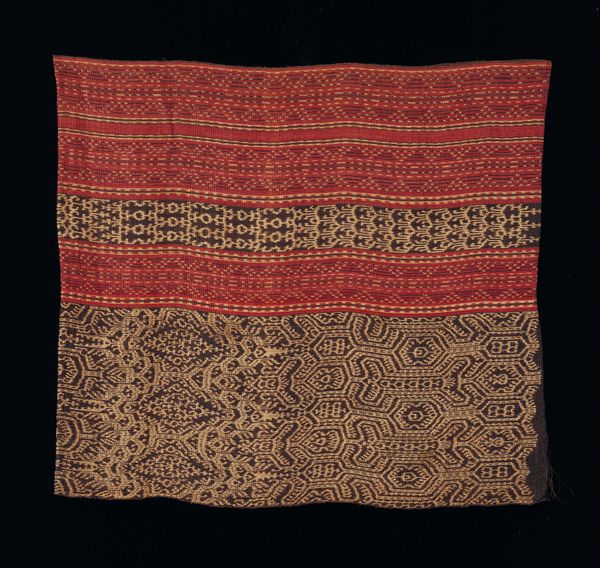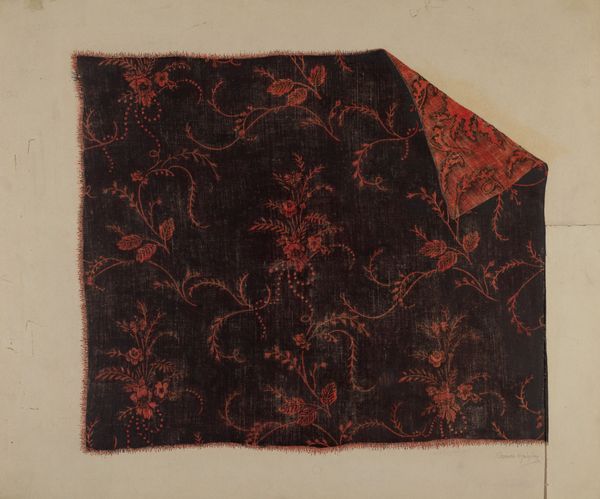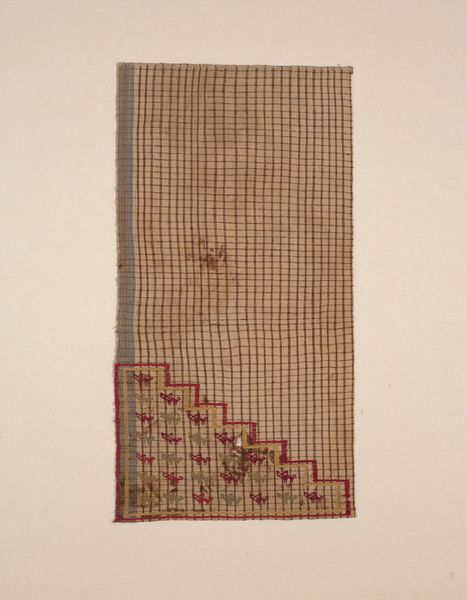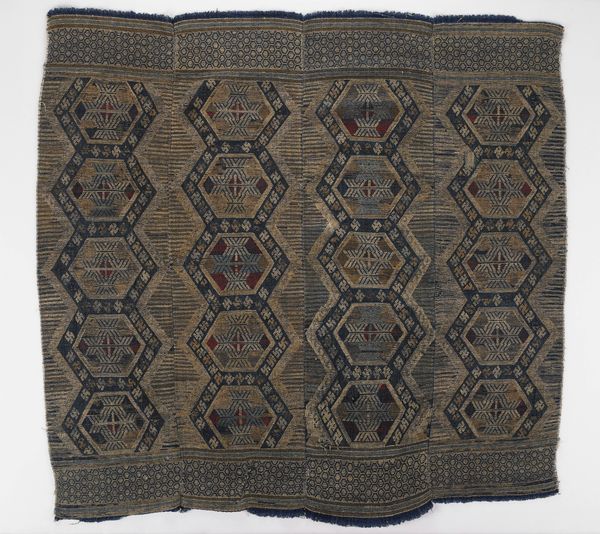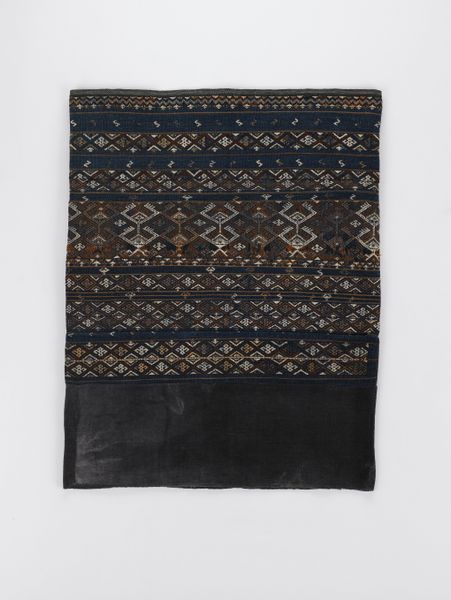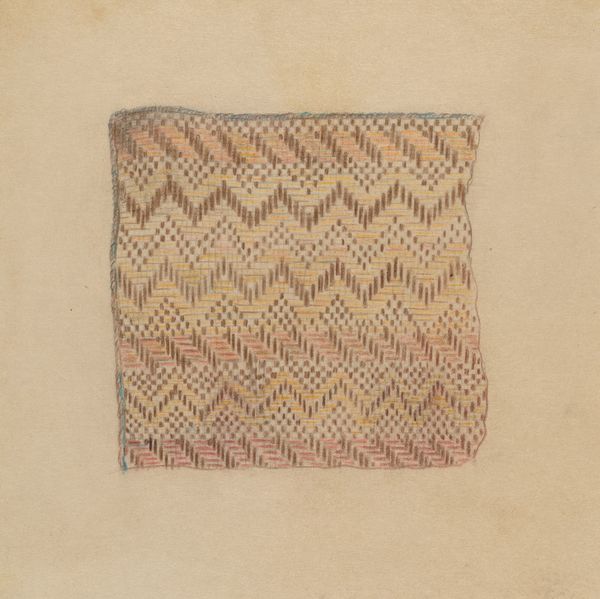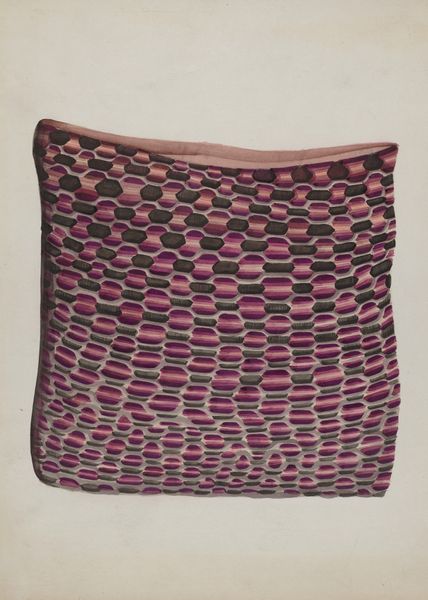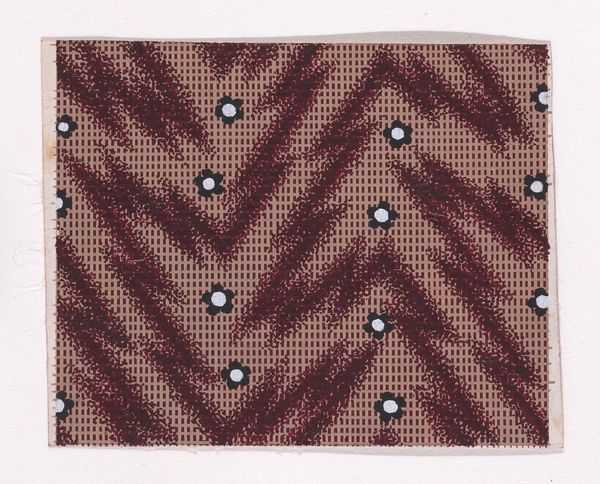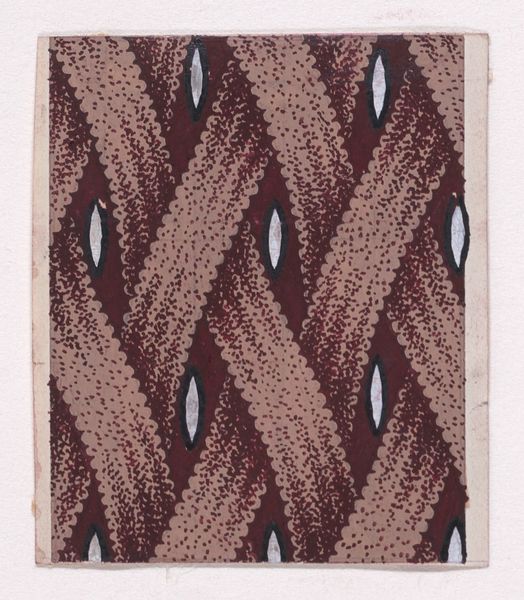
weaving, textile
#
weaving
#
textile
#
white palette
#
geometric
#
indigenous-americas
Dimensions: 22.2 × 17.2 cm (8 3/4 × 6 3/4 in.)
Copyright: Public Domain
Curator: Let's take a closer look at this textile "Fragment," likely created by the Chancay people sometime between 1000 and 1476. It is currently held in the collection of the Art Institute of Chicago. Editor: My first thought is one of intricate control, the fineness of the weave suggesting a deeply sophisticated understanding of design and pattern. There's a remarkable elegance achieved with what looks like a very restrained color palette. Curator: Indeed, the weaving itself embodies cultural continuity, a powerful resistance against colonial erasure in its deliberate geometry. I'm drawn to consider its place within larger indigenous narratives of resistance and survival, where textiles functioned as vital carriers of cultural memory and embodied agency. Editor: Absolutely, one could interpret each motif here as a deliberate emblem, carrying coded information accessible only to those initiated into the symbolic language of the Chancay. I see subtle mirroring at play here, possibly hinting at ideas about duality or balance. It's quite potent how small gestures become invested with greater cultural importance. Curator: What intrigues me, in a way, is how a fragment such as this operates almost as a microcosm. A single swatch contains generations worth of meaning related to power, hierarchy and beliefs, communicating those complex ideas to contemporary eyes. Editor: A microcosm of ancestral legacy, I think it’s well said! And the physical fragmentation paradoxically enhances this effect. This incomplete object sparks curiosity and encourages us to fill the voids with our imagination. It compels us to recognize not just the piece that’s missing but also the totality of culture it represents. Curator: To consider this "Fragment" as an archive—woven, dyed, and intentionally preserved—recontextualizes art historical inquiry for contemporary audiences, encouraging dialogue surrounding its significance. It truly serves as evidence for future thought. Editor: Exactly, seeing those delicate symbols and geometric patterns gives such clear insight to how ancestral people communicated beliefs and traditions through textiles, using pattern itself as text and testament. I will hold a richer understanding of symbolism moving forward thanks to viewing this beautiful piece.
Comments
No comments
Be the first to comment and join the conversation on the ultimate creative platform.
